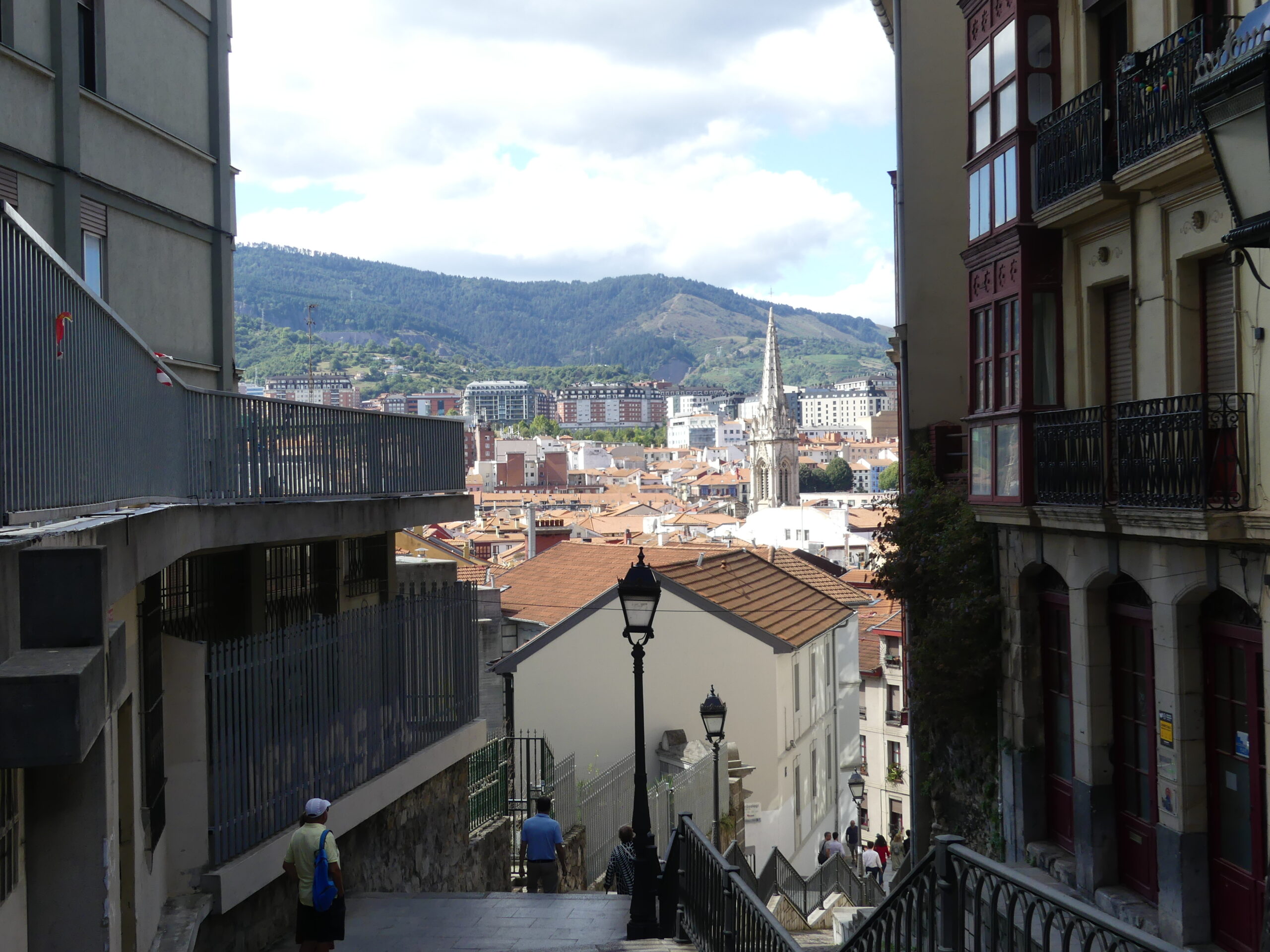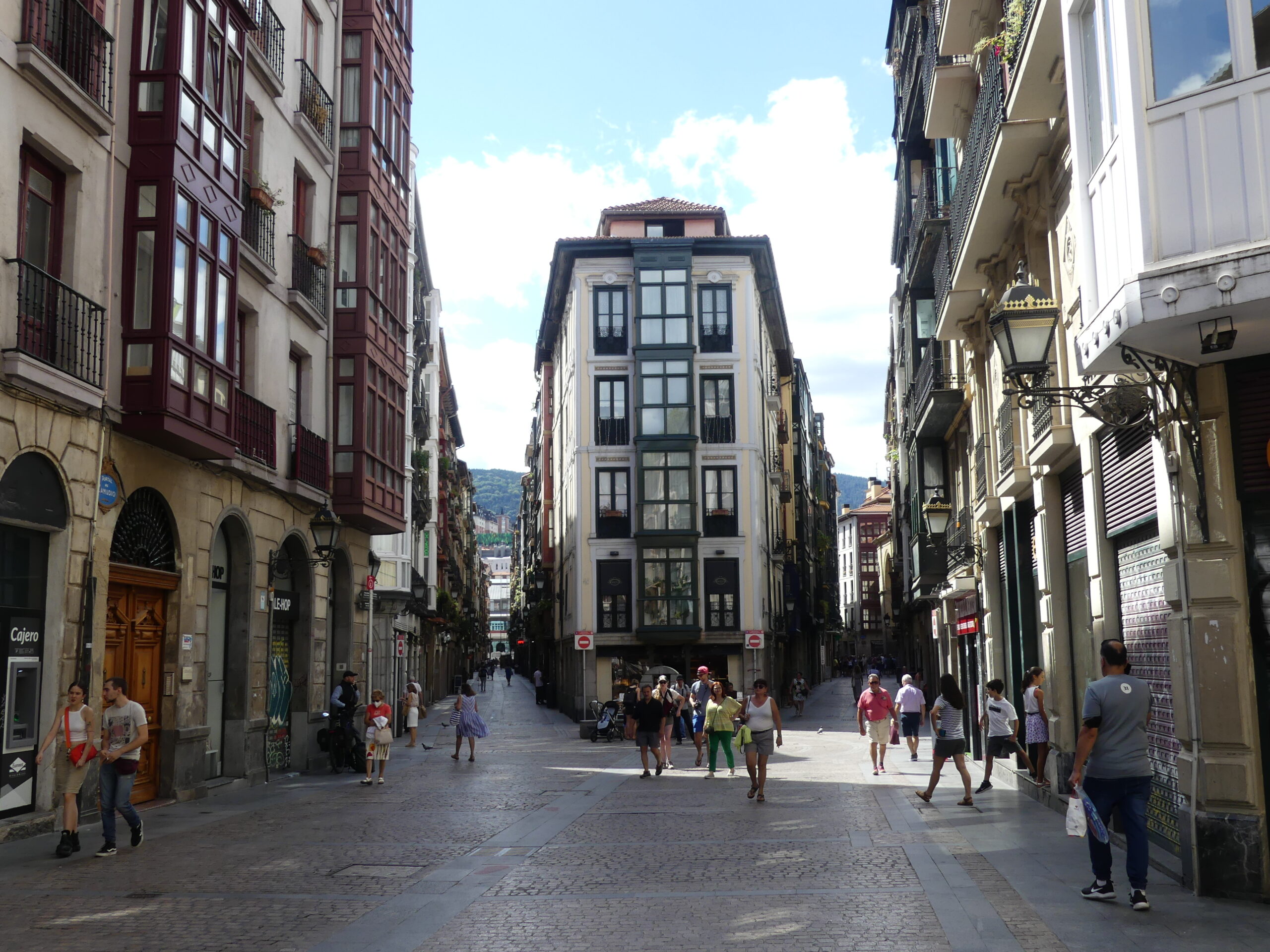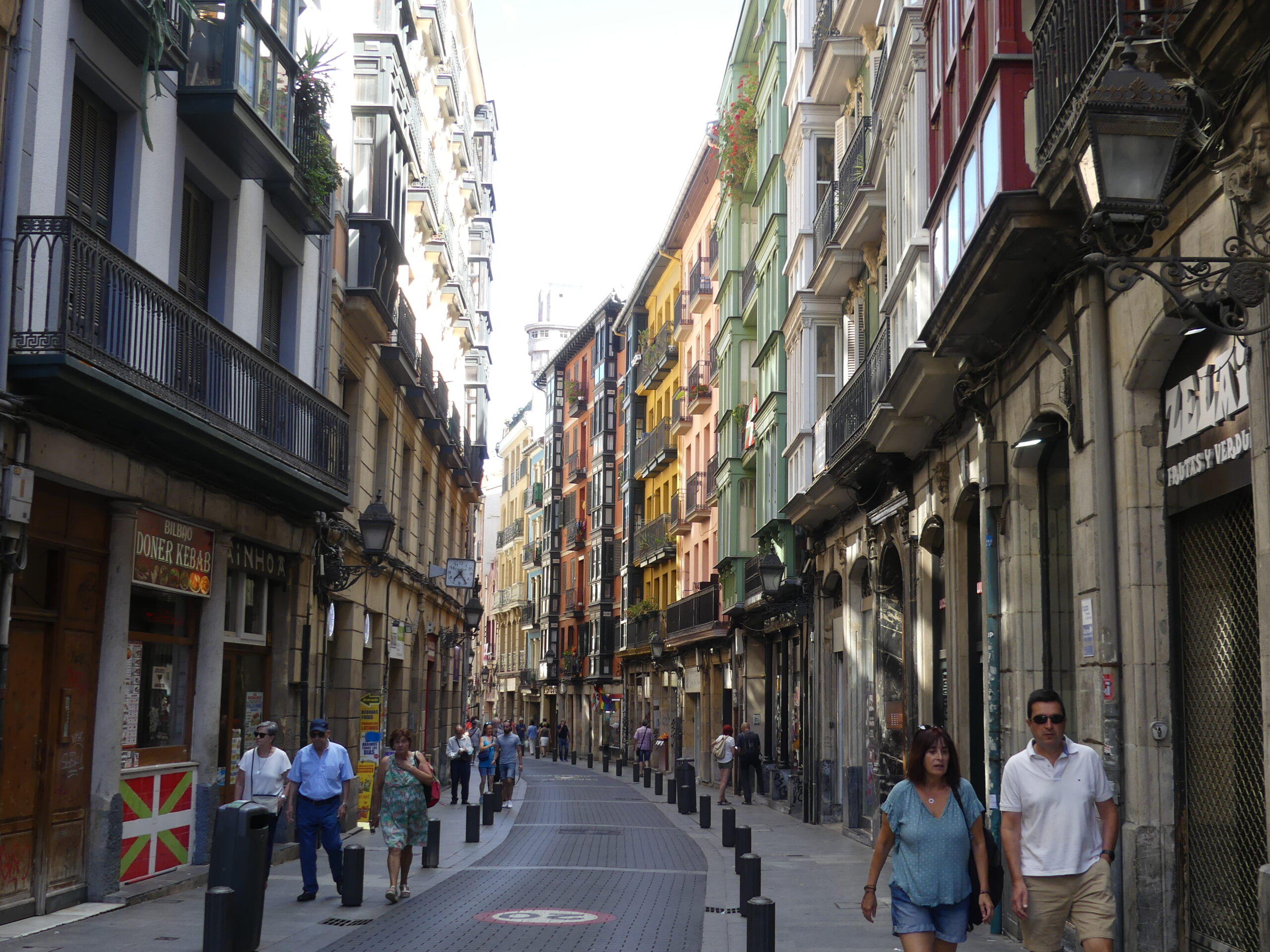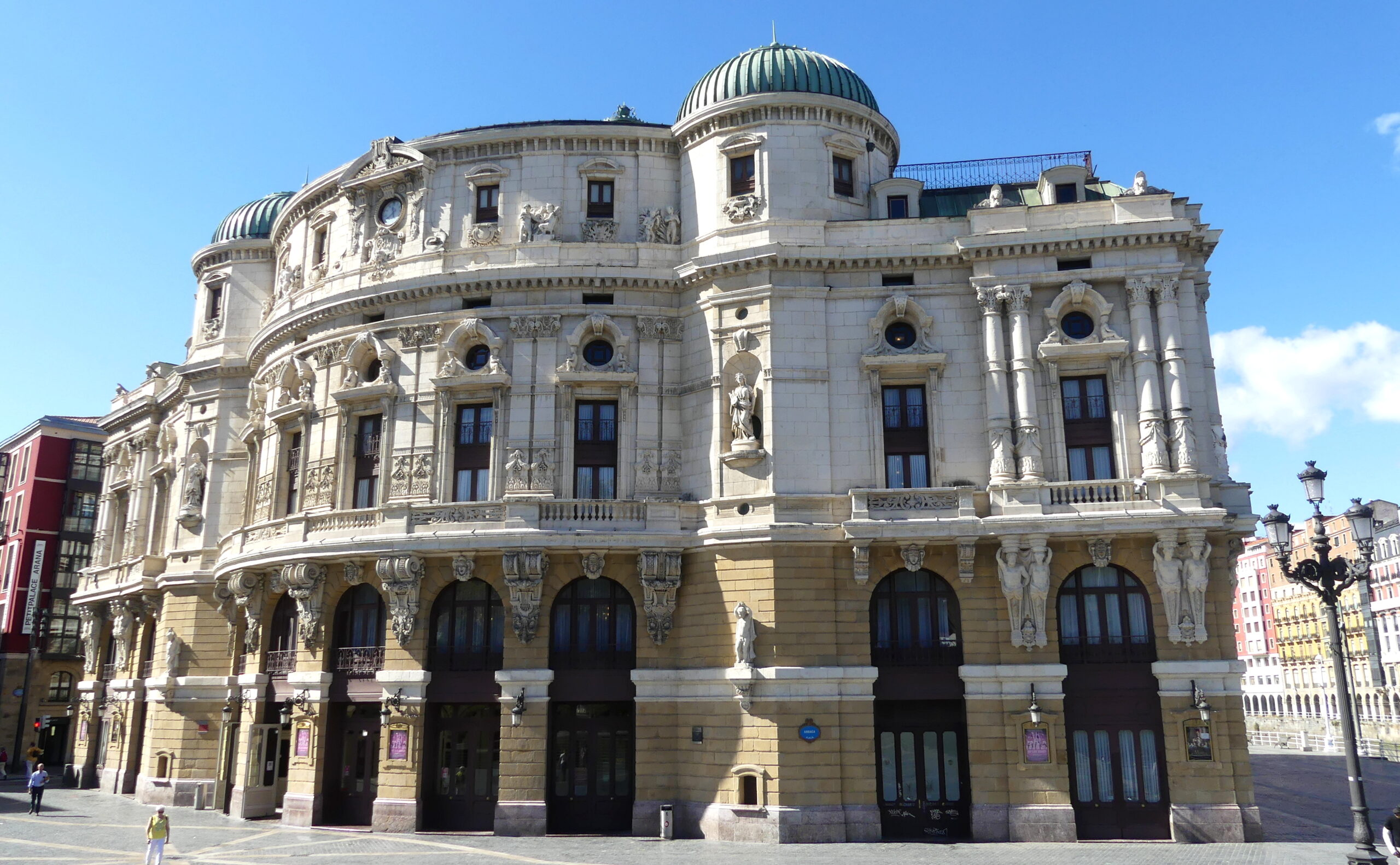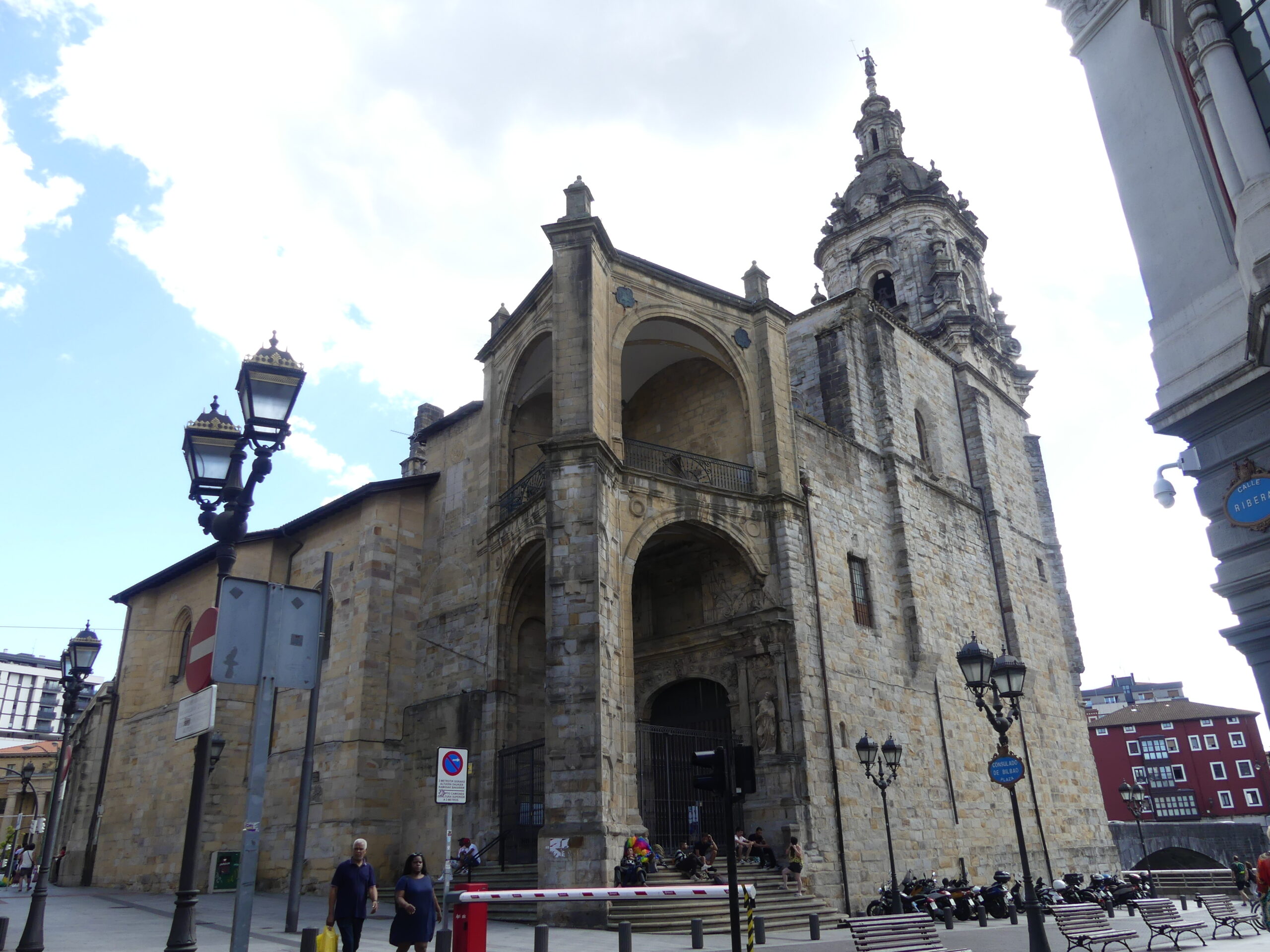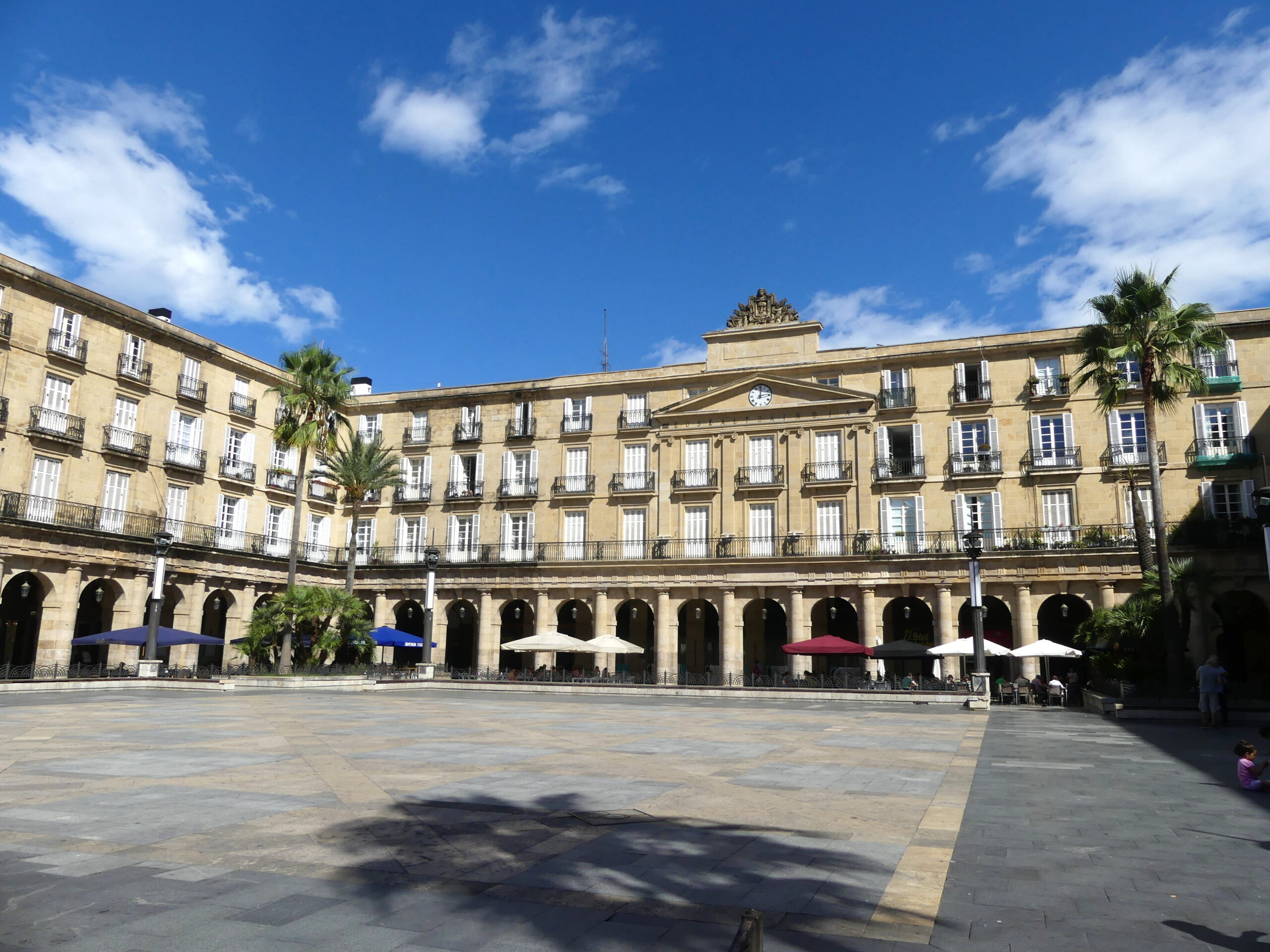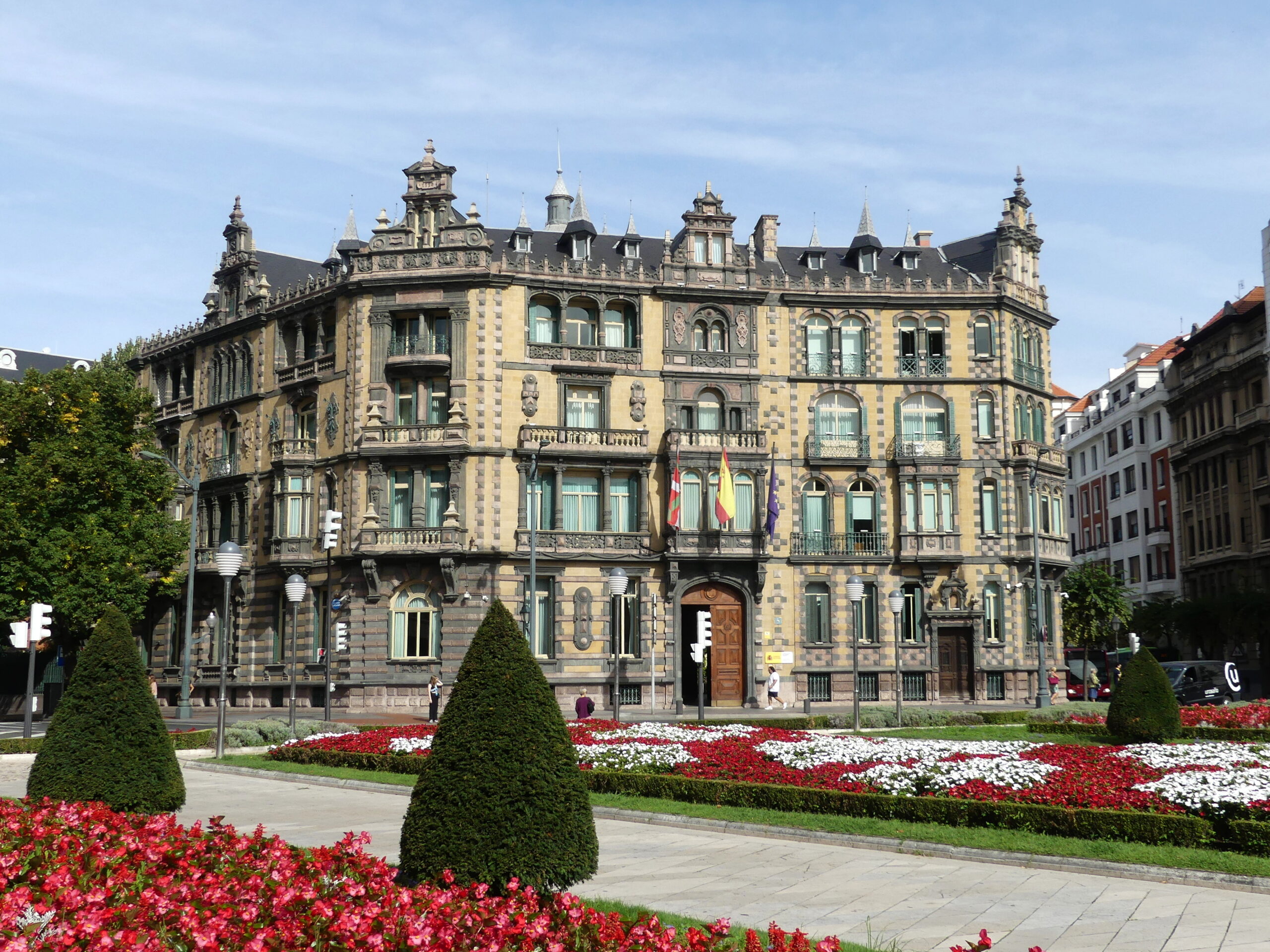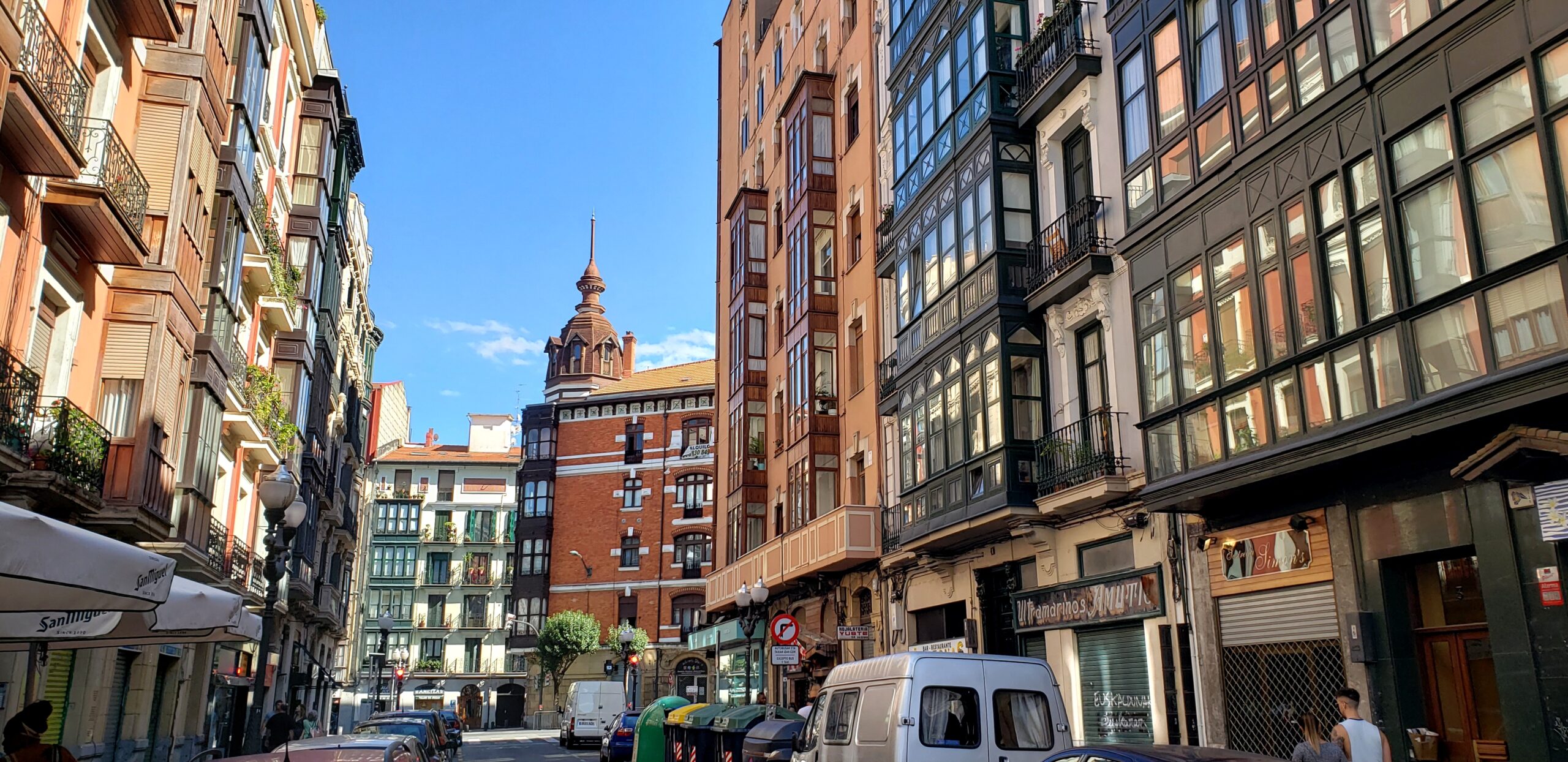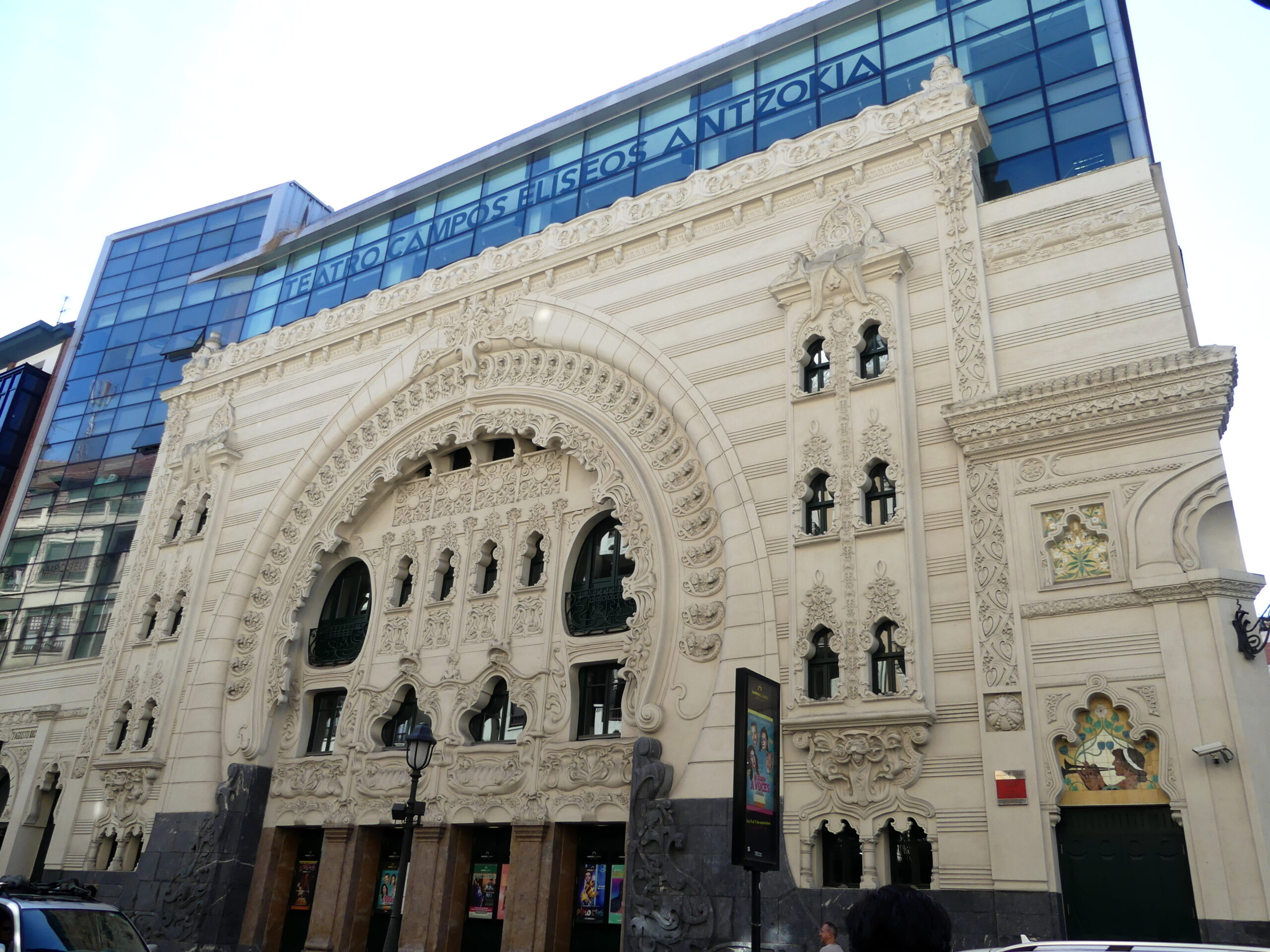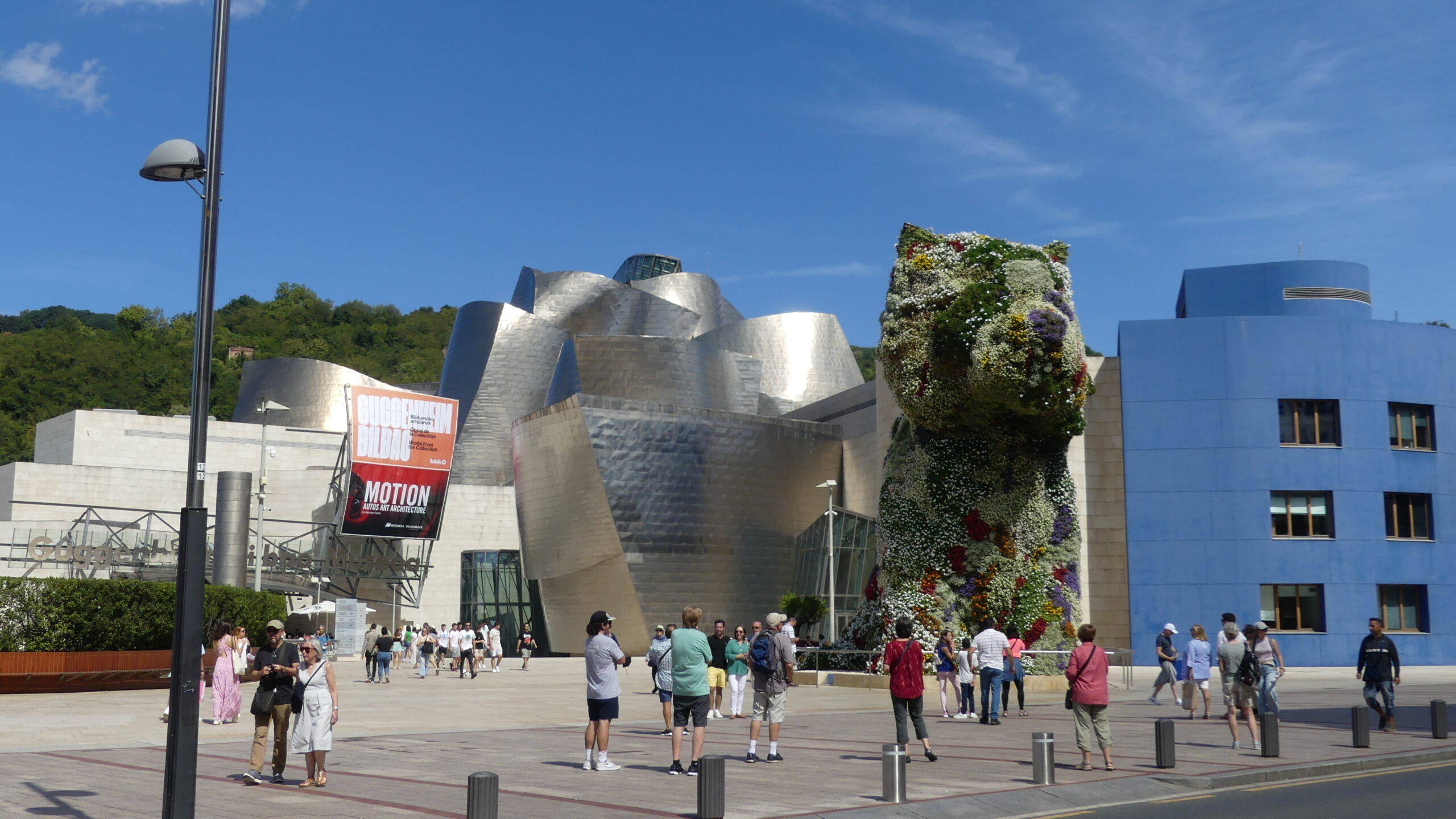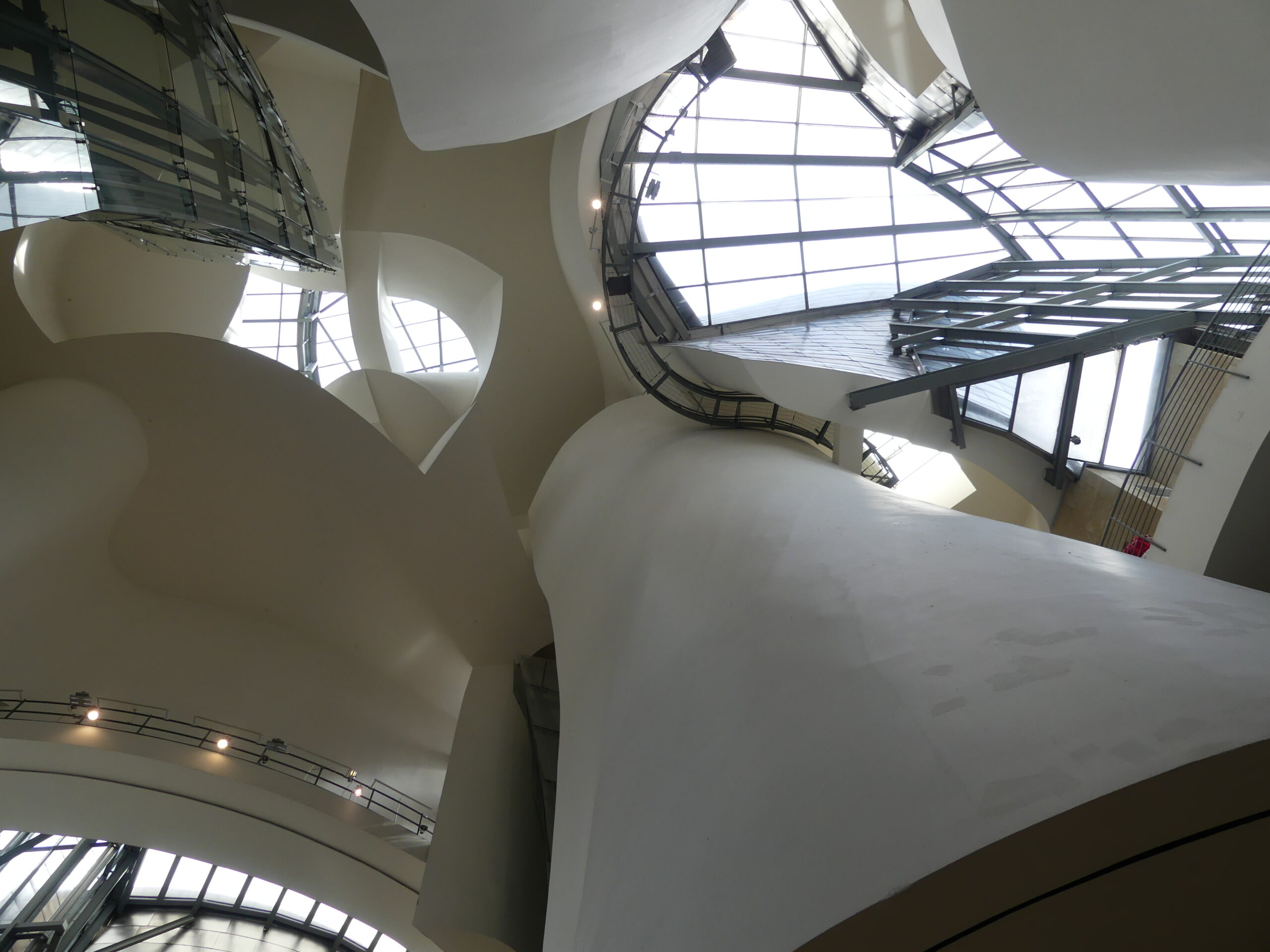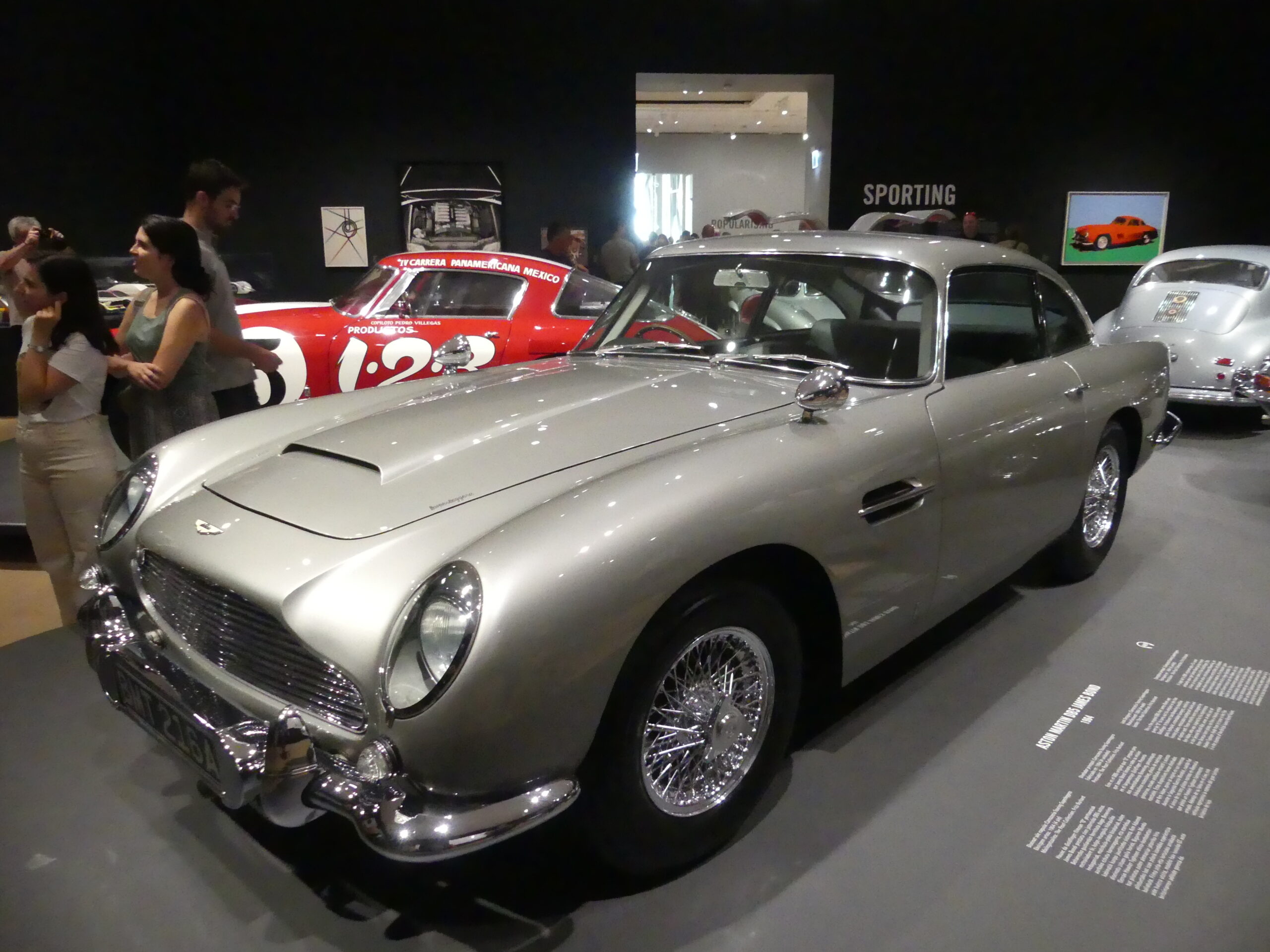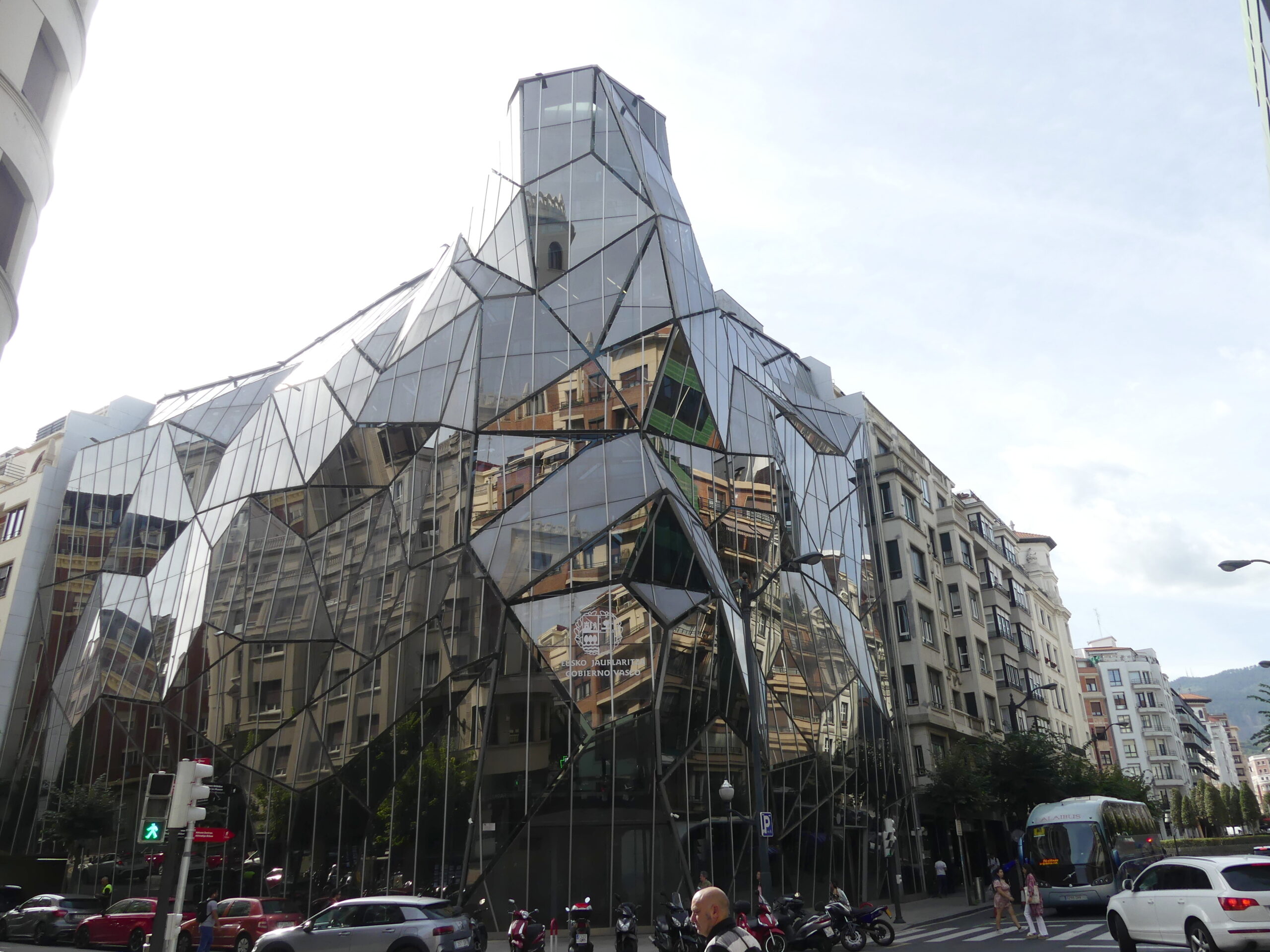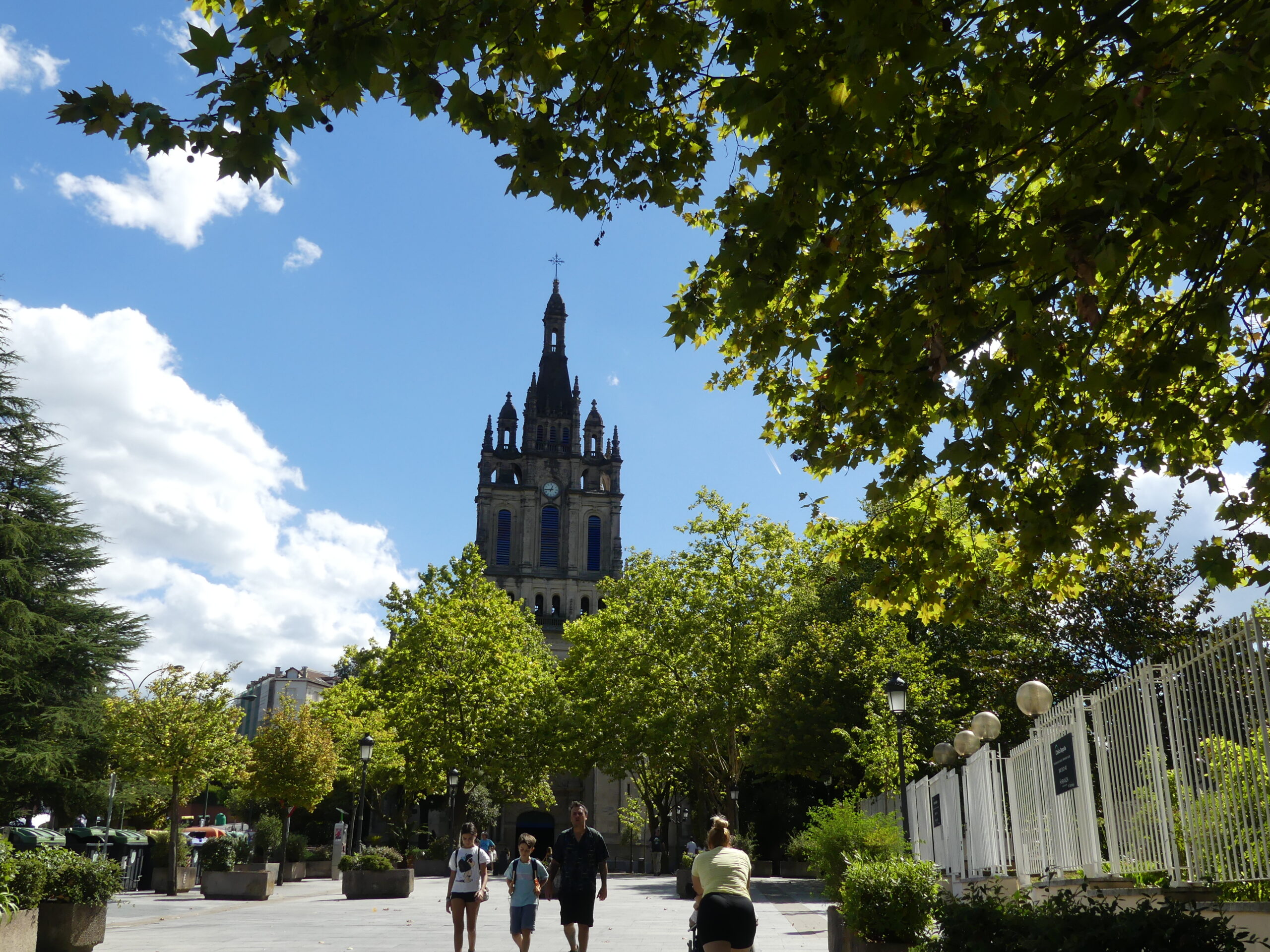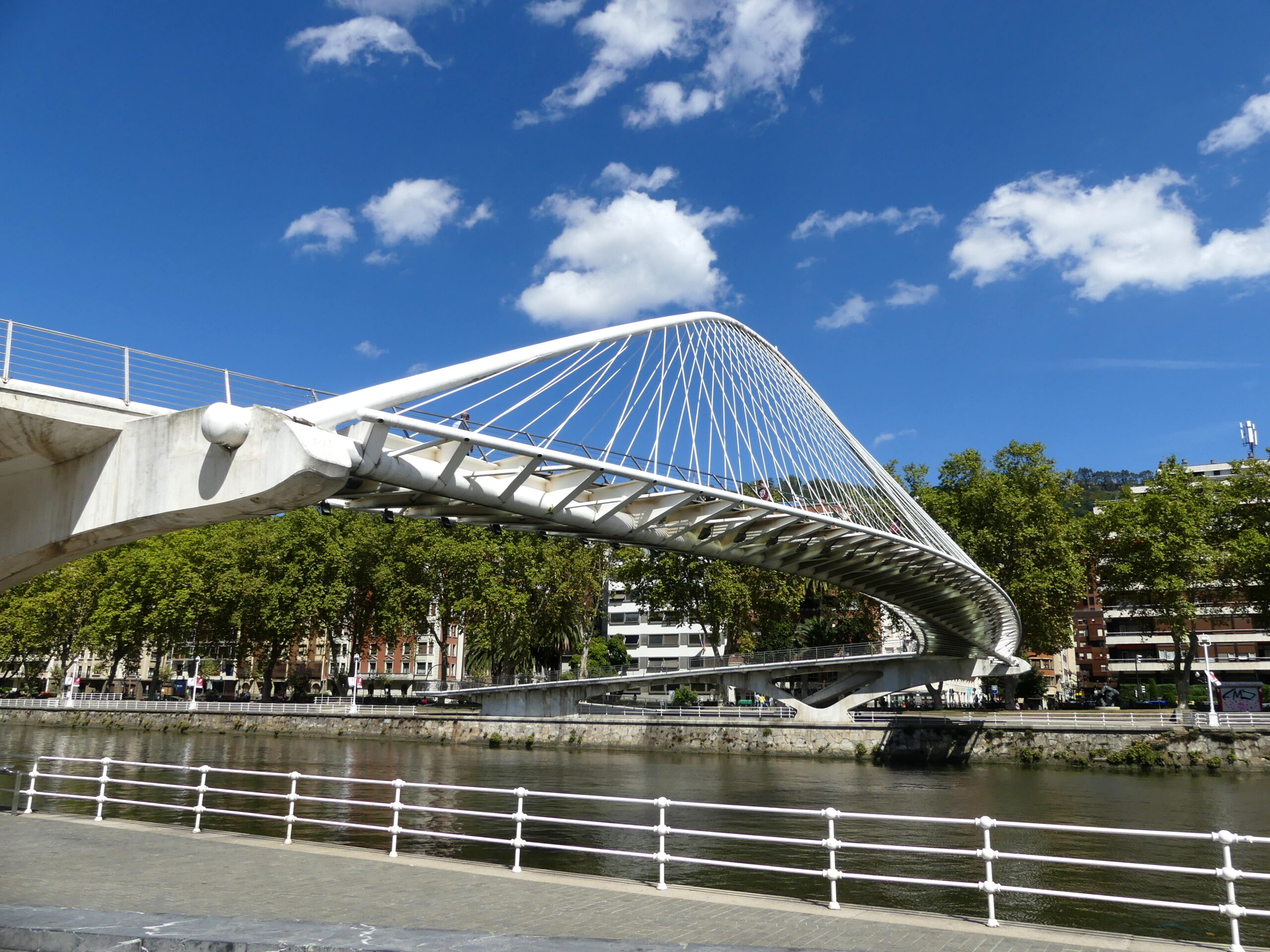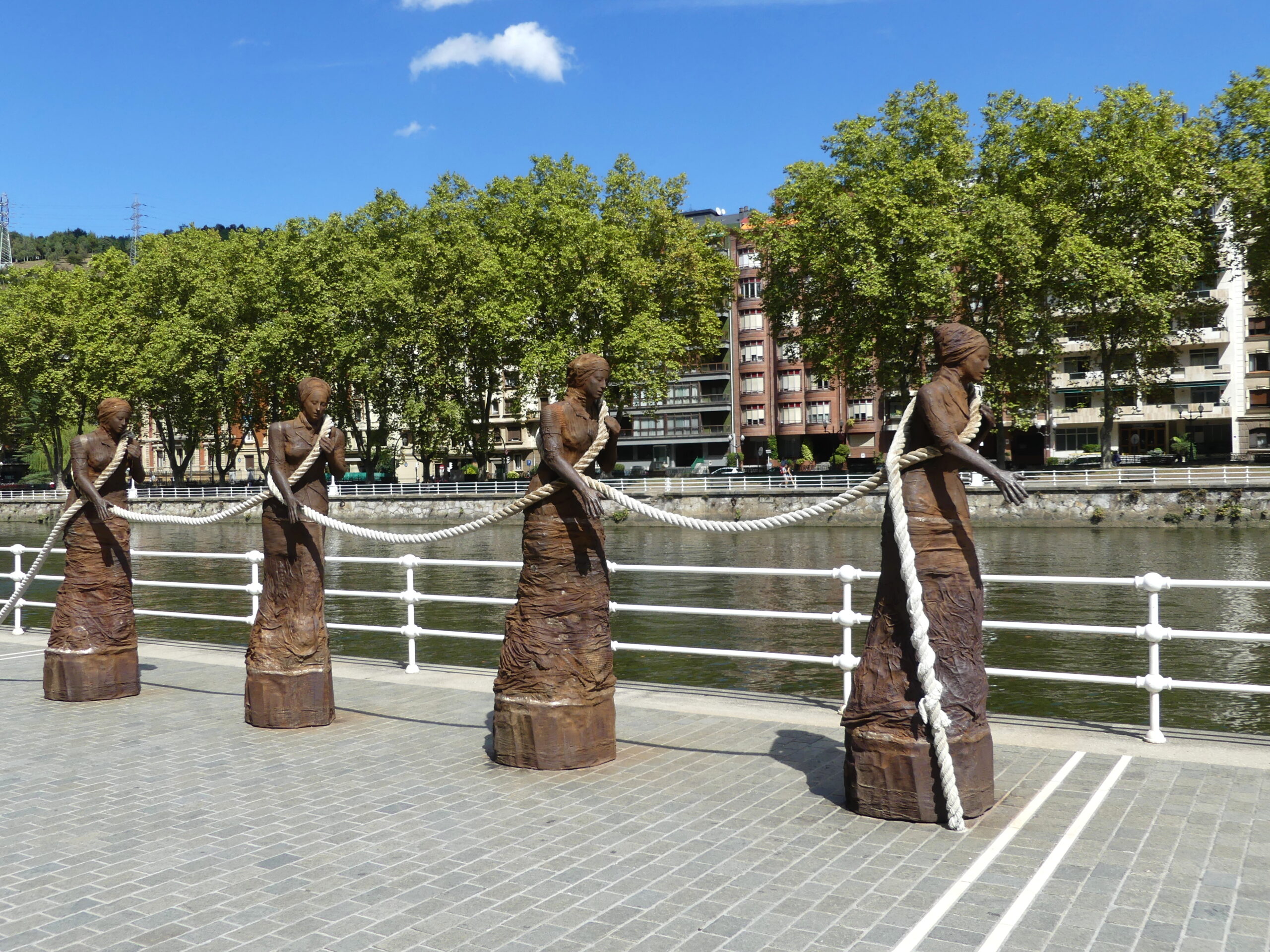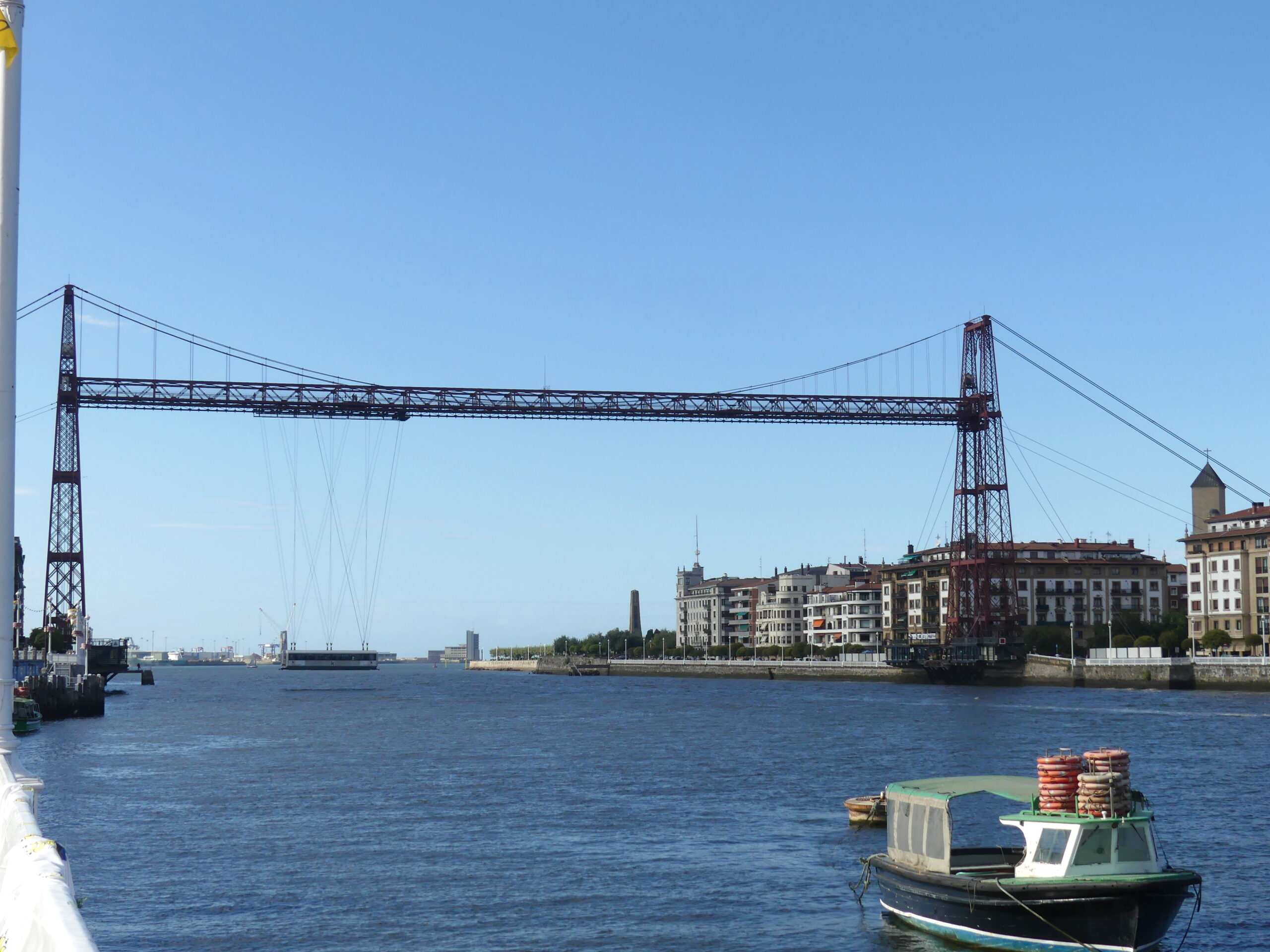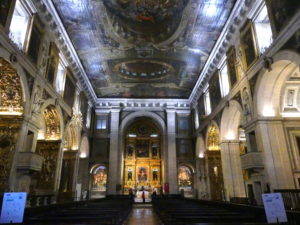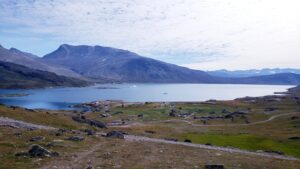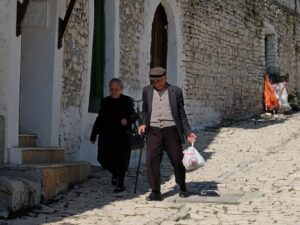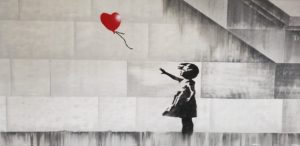In brief: Perhaps Gehry’s Guggenheim Museum pushed Bilbao into a new era, but our visit showed a city with so many old and new attractions.
Bilbao was not the city we expected. We thought we would find just another old town that expanded into a pleasant, but more drab newer town…and with a gleaming contemporary Guggenheim Museum plunked in the middle.
What we found instead was an old mercantile city that has evolved vibrantly and elegantly through the centuries since its founding in 1300. And we found forested hills, 100 meter (300 plus feet) high hills, rising from the river, the tail end of the Pyrenees, we thought. Altogether, we were disoriented in a good way, as the old and new, high and low, mixed together delightfully before our eyes.
Old Town and the Expansion Districts
A principal intersection of the old town heading toward the streets known as Siete Calles, Seven Streets, a rectangular grid of seven streets within an enclosing semicircle that constituted the original residential section of the city along the river. These long streets may be old but, as you can see, the buildings seem fresh and updated over the centuries. During the siesta time, they are very quiet, but at other times they bustle with food and drink service spilling onto the streets.
This is supposedly a pedestrian street in the old town, but people walk along the side to avoid the authorized vans and cars. The distraction is a shame because this is one lovely street. Even here, the buildings seem much newer, often renovated since their medieval days.
This grand theatre Arriaga at the edge of the old town was the height of fashion in the late 19th century, an imitation of the Garnier opera house in Paris. It still offers the latest in theatre and music.
One of the oldest churches, San Antón stands along the river in the old town. On this site, in June 1300, Diego Lopez de Haro proclaimed the original charter of the city.
Next door is the eclectic building of La Ribera market, supposedly the largest covered market in Europe, with typical stalls on the upper floor, and eateries along the ground floor.
The formal and symmetrical Plaza Nueva updated part of the old town in the 18th century just a few steps from a more typical angular and irregular medieval plaza. The cafes line the colonnades offering shade as well as refreshment.
Expansion District:
The Chavarri Palace from the 1890s mimics Flemish Renaissance buildings. Around that period, Bilbao seemed to flourish, as many grand buildings of that time (including the train station, the main theatre, bank buildings, and more) dot the streets.
Aside from being quite stylish, this one has a very distinctive feature: none of its windows are the same!
The new reflects on the old within the street where we stayed.
Other buildings merged 19th century facades into the contemporary.
Guggenheim
Frank Gehry’s Guggenheim Museum was intended to help Bilbao transform itself from a fading city into a tourist and economic center. Opinions differ on the impact, but tourists have flocked here since.
This is how the museum greets visitors as approached from the surrounding streets – built 25 years ago. Perhaps the most impressive view is from across the river, where support buildings like the blue box are not visible. But that surface was in shadow due to the sun’s movement, and after all this is the entrance. Plus we were charmed by the very large Puppy of Jeff Koons, with actual flowers growing on its surface.
We differed on our opinions about the building itself, whose soaring interior certainly exhilarates.
But we were upset to discover that the third floor was closed during our stay in Bilbao. That meant we could not view most of the permanent collection we expected to see – with such artists as Anselm Kiefer, Mark Rothko, Diebenkorn, and others. Automotive design filled up the second floor. There was a massive room on the ground floor devoted to a host of Richard Serra’s weathered steel ‘environments.’ But that proved several too many. Lots of people say that the fine arts museum down the river a bit is a far better deal, what with the exorbitant price of 18 Euros for the Guggenheim. At times, they may be right.
Bond, James Bond…and his wheels. In the absence of art at the Guggenheim, we were faced with artistry. The major exhibit at the time of our visit was motor vehicle design, not exactly our passion. There were a few pictorial treasures scattered behind some of the automobiles – some apt variations of the Standard gas station by Edward Ruscha, a Warhol with multiple faces, etc. But 90 years of cars were the thing. Many people hung about this one. With Sean Connery doing hairpin turns in “Goldfinger” on a screen nearby, this was the actual car he drove, an Aston Martin from the 1960s. (The women in the photo are watching the film clip.) This car was retrofitted, not by Q, but by a designer with pilot fighter experience. So he added two machine guns, a bulletproof shield and an ejector seat, among the “usual refinements.”
We found contemporary architecture all over Bilbao, not just at the Guggenheim. This prismatic building wildly reflects the older structures around it. In case the surface gives you a headache, inside is the headquarters, aptly, of the Basque Health Department.
Uphill and upriver
From the old town you can climb 311 steps and a few inclines to a venerated church. Along the way, there is a broad garden looking out over the adjacent hills, an old cemetery, and a shiny green football field, as well as several café restaurants chock full of people at mid-day. But we were most charmed by this view back to town framed by the narrow staircase and the hillside apartment buildings.
Atop the hill with 311 steps stands the 16th to 17th century basilica honoring the site where Mary, as Our Lady of Begoña (yes, the flower), miraculously appeared to the people in the 16th century. Along the climb, we passed many travelers en route to Santiago de Compostela because pilgrims typically visit this important church. They all wear the same uniform, it seems, a staff, shorts, sizable backpack, and a broad-brimmed hat. Oddly, from the plaza behind the church, the main sight is a massive hotel swimming pool enjoyed by dozens of mostly young men and women, presumably relaxing from the demands of the walk.
Historically, however, the river is key to the city. Even the name says so, as it derives from the Basque for river and cove (Bil-Ibaia-Bao) or perhaps the Spanish for beautiful ford (bello vado).
So, back on the valley floor, we could walk for hours along the Bilbao river, or Nervion, as we did, and enjoy its pleasant broad walkways on either side.
This shows the fancy French style of the late 19th century City Hall (Ayuntamiento) along the river. Behind it a funicular runs up and down to the top of Artxanda mountain from a Calatrava footbridge on the river.
The bridge is another new addition to the cityscape.
What the riverwalk along the Nervion looks like, with broad pathways and tree-lined buildings alongside. This sculpture by Dora Salazar honors the hard work done by women, depicting the rope girls, women who towed vessels along the river in the old days. To us, the entrapping rope seemed to suggest a darker commentary on women’s roles.
And then very, very downriver…
Bilbao surprisingly sits about 7 kilometers from the mouth of the Nervion and its meeting with the Bay of Biscay. We dared rush hour traffic to find an unusual bridge connecting two small towns just before the river reaches Bilbao’s deepwater port on the bay.
It was the clever solution to a late 19th century problem. How can people and cargo cross 160 meters of water without affecting river traffic and without huge bridge ramps hanging from each steep bank? Oh, and do it cheaply. Answer: a sideways Eiffel tower of iron and steel as a transporter bridge, with a gondola rather than an elevator.
For its innovation, beauty, and functionality, this Vizcaya bridge (or Puente Colgante to the residents) has been named a World Heritage site (Industrial Heritage category).
In this picture, the gondola hangs from the steel cables about a quarter of the way from the left. Plus pedestrians can still climb up and traverse the top level from which the gondola hangs. Here you can even see a couple staring down. Every 8 minutes since it opened in 1893 (except for a few years of the Spanish Civil War) the gondola carries up to six cars and several dozen passengers in a 90 second ride. An estimated four million passengers and half a million vehicles use the bridge annually. We weren’t on the banks long, but saw the gondola cross several times. On our way out, we nearly found ourselves in the queue to cross (with a longer queue on the other side that we preferred to avoid).
Then it was back to Bilbao to cross the pedestrian bridges within the city, wander the river, and soak in the atmosphere over a drink at one of the inviting plazas or parks.
(To enlarge any picture above, click on it. Also, for more pictures from Spain, CLICK HERE to view the slideshow at the end of the itinerary page.)


